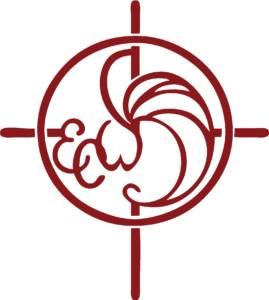About the National Episcopal Church Women
 The National Board of Episcopal Church Women uses the following statements to guide its work:
The National Board of Episcopal Church Women uses the following statements to guide its work:
PURPOSE
The purpose of this organization shall be to empower the women of The Episcopal Church to carry out Christ’s work throughout the world.
VISION
As the eyes, ears, hands, and heart of Christ in the world, we will persist in the work of healing, justice, and peace.
LIVING THE MINISTRY
To live Christ’s ministry we:
- Listen to voices of women worldwide;
- Promote educational, spiritual, and social programs which minister to women and children;
- Provide opportunities and tools to grow relationships with God and others through spirituality, prayer, and worship; and
- Encourage the development of women’s leadership by example in stewardship, training, and education.
And as we pursue furthering God’s kingdom here on earth, we use the Five Marks of Mission, developed by the Anglican Consultative Council and adopted by The Episcopal Church’s General Convention, to help frame our thinking about mission and ministry. The Five Marks are:
- To proclaim the Good News of the Kingdom
- To teach, baptize and nurture new believers
- To respond to human need by loving service
- To seek to transform unjust structures of society
- To strive to safeguard the integrity of creation and sustain and renew the life of the earth
History of the Episcopal Church Women
WHO WE ARE
We are Episcopal Church Women of all ages, ethnic origins and socioeconomic backgrounds who hold a variety of views. However, the common denominator of our members is love of God and the wish to do His work.
MISSION, VISION & ROLE
Mission – Centered in congregations, the Episcopal Church Women (ECW) empowers women to do Christ’s ministry in the world.
Vision – Our vision for all women of the Episcopal Church is that we become a vibrant blend of all ages, coming together as a peacemaking, healing part of the Church. We aspire to be a Godspark – shining and sharing the love of Christ.
Role – The Role of the National Board of ECW is to:
-
Model and share best practice in communication, programming, leadership, and governance
-
Develop, support, and inspire leaders at all levels: local; diocesan; provincial; national
-
Represent and build support for ECW in the wider church and the world
(Adopted by the 2006-2009 ECW National Board during the March 11-17, 2007 meeting)
FROM THE SPIRIT OF MISSIONS, VOLUME XXXVII FOR 1872:
It is our desire as speedily as possible to bind together the various Parochial Missionary Societies already existing, to organize new ones wherever they may be desired, and, by every means within our power, to awaken deeper and more permanent interest and zeal in the Missionary work among the women of the Church. We long to have each one feel that she, individually, has something to do for Christ and for the coming of His Kingdom, while, at the same time, we long no less to have her realize that she is working, not alone, nor simply as a member of a single parish, but as one of a great company wherein all, in their own special stations, wait and watch and labor for their Lord. We do not seek to control or direct the labor of the Society or the offering of the individuals.
What we do seek is to quicken the Missionary spirit, and then to urge it to prompt and generous action. We want your gifts of time, of strength, of intellect, not for ourselves, but for our Master. Lastly, there are hundreds more, earnest, faithful, devoted women, who would be cheered and whose hands would be strengthened, if they could only know what is being done by their sisters in the Church, and could see their offerings, small and insignificant as they seem, increased and multiplied by union with the gifts of others. We wish all to draw closer to each other, labor more unitedly, to give more nobly, to pray more fervently, and to follow Christ’s example.
We shall be glad to hear, not only from Rectors of parishes, but any and all earnest Christian women, who are willing to give their hearts to this work, and who seek further information and direction with regard to it. (Paraphrased from the original text.) At the 30th General Convention, held in Baltimore in 1871, the Board of Missions was authorized to organize a Women’s Society. The Emery sisters, Mary Abbott, Julia Chester, Susan Lavinia, and Margaret Theresa, were instrumental in the early organization of the Women’s Auxiliary. Mary wrote to every rector asking for cooperation in appointing a correspondent from that parish to help organize an Auxiliary Missionary Society, or form a relationship with a society already active in that parish. Thus, began a continuing communication link to encourage, inform, recruit, and guide.
The first Triennial Meeting was held in 1874 at the same time and place as the 31st General Convention. Sixty-six women from five states gathered. By the second Triennial Meeting in 1877, 48 dioceses had formally organized groups. Much of the early work of the Women’s Auxiliary was to address the problem of funding women who dedicated their lives to mission work. (Thus, our reputation as fundraisers goes back to our beginnings!) From the beginning collections were taken up which led to the formation of The United Thank Offering. This effort, as well as the number of participants, grew at each Triennial Meeting. In preparation for the 1898 Triennial Meeting, 25,000 collection boxes were sent out which gathered in $82,818.56.
The increasing number of participants, almost 2000, prompted a change in 1907 in which only the officers of diocesan organizations could attend the Triennial Meeting in order to seat everyone and have manageable groups in small mission studies. The Triennial Meeting in 1922 reflected the new concept in program and organization. A National Board had been formed to oversee the direction of the work of the women, in not only supporting missionaries, but in social service, religious education, and prayer and worship.
Prior to the 1958 Triennial Meeting, the Women’s Auxiliary Executive Board became the General Division of Women’s Work. The Triennial Meeting adopted the necessary bylaws which included a designation that diocesan groups would be known as Episcopal Church Women and parish groups would be known as the Women of _________. Between 1958 and 1985, the role of women in the Church went through numerous and significant changes. As women were accepted into seminaries and ordained, elected to vestries and as deputies to General Convention, and otherwise mainstreamed, the Episcopal Church Women struggled with their position in the Church. Over time, the national structure changed from being a part of the National Church structure to an independent group culminating in the creation of the National Board of the Episcopal Church Women in 1985. This Board, with minor changes, continues to function.
1871 — General Convention authorized the Board of Missions to organize the Women’s Auxiliary to the Board of Missions.
1874 — First Triennial Meeting held in New York.
1919 — Along with the Presiding Bishop and National Council, the First National Council Executive Board of Women’s Auxiliary established.
1920 — National Council adopted resolution recognizing in all of its departments the Executive Board of Women’s Auxiliary.
1958 — By action of the National Council, the Executive Board of the Women’s Auxiliary became the General Division of Women’s Work.
1964 — National Council became Executive Council. General Division of Women’s Work has liaison member with voice and vote in every department.
1967 — General Division of Women’s Work and Executive Council vote to suspend bylaws in order to “enter into such new structure with other departments and units as seems appropriate to discharging responsibilities and functions…”
1970 — Resolutions from 1969 Committee for Women meeting approved for trial use.
1973 — Triennial Meeting voted overwhelmingly to continue.
1976 — Triennial Meeting adopted Structure Document, formed Triennial Program and Planning Committee.
1985 — Triennial Meeting adopted bylaws, forming Episcopal Church Women, Episcopal Church, U.S.A.
1988 — Regular publication of the ECW Communique commenced.
1994 — Episcopal Church Women/United Thank Offering Joint Committee Formed.
2000 — Triennial Today is centerfold in Convention Daily.
2001 — Website re-launched and expanded.
2007 — Website redesigned and expanded (www.nationalecw.org)
2009 — Website redesigned and expanded (www.ecwnational.org)
